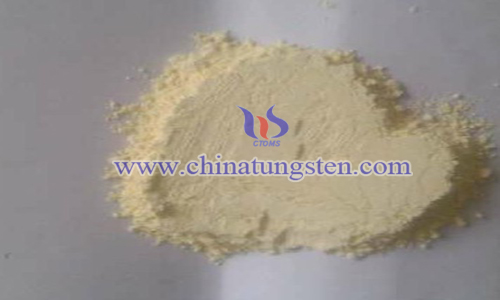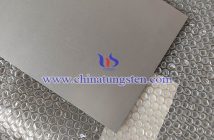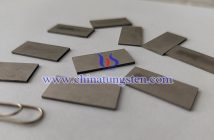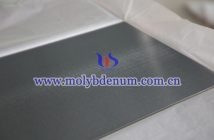Scientists have identified a class of materials that could prospectively be used for developing even higher power batteries. The team, from the University of Cambridge, used materials that had a complex crystalline structure and discovered that lithium ions pass through them at rates far exceeding those of conventional electrode materials, which translates into a battery that charges considerably faster.
Such materials, called niobium tungsten oxides, do not lead to higher energy densities upon being used under typical cycling rates. However, they are used for their own fast charging applications. Moreover, their chemical behavior and physical structure give scientists a valuable understanding of the means for developing a super-fast, safe charging battery and indicate that the solution to futuristic batteries might come from unconventional materials. The outcomes of the study have been published in the journal Nature.
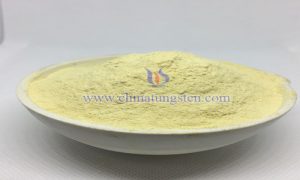
With the prominent exception of batteries, several day-to-day technologies have been getting faster, smaller, and more inexpensive. Besides the probability of a smartphone that could be completely charged in a few minutes, the difficulties related developing a better battery have been hampering the widespread use of two major clean technologies - electric cars and grid-scale storage for solar power.
“We’re always looking for materials with high-rate battery performance, which would result in a much faster charge and could also deliver high power output,” stated Dr. Kent Griffith, a postdoctoral researcher in Cambridge’s Department of Chemistry and the first author of the paper.
In their simplest form, batteries are formed of three components: a negative electrode, a positive electrode, and an electrolyte. Upon charging a battery, lithium ions are liberated from the positive electrode and pass through electrolyte and the crystal structure toward the negative electrode, where they are stored. The speed of this process is directly proportional to how fast the battery can be charged.
While searching for innovative electrode materials, scientists usually attempt to make the particles smaller.
“The idea is that if you make the distance the lithium ions have to travel shorter, it should give you higher rate performance,” stated Griffith. “But it’s difficult to make a practical battery with nanoparticles: you get a lot more unwanted chemical reactions with the electrolyte, so the battery doesn’t last as long, plus it’s expensive to make.”
The niobium tungsten oxides used in this study have an open, rigid structure that does not trap the inserted lithium. They also have larger particle sizes compared to various other electrode materials. Griffith proposes that the reason for these materials to not gain attention previously is their complex atomic arrangements. Yet, he suggests that the materials get their distinctive transport properties from their mixed-metal composition and structural complexity.
“Many battery materials are based on the same two or three crystal structures, but these niobium tungsten oxides are fundamentally different,” stated Griffith. “Pillars” of oxygen hold the oxides open, thereby allowing lithium ions to pass through them in three dimensions. “The oxygen pillars, or shear planes, make these materials more rigid than other battery compounds, so that, plus their open structures means that more lithium ions can move through them, and far more quickly.”
The team employed a method known as pulsed field gradient (PFG) nuclear magnetic resonance (NMR) spectroscopy, which cannot be readily applied to battery electrode materials, to measure the movement of lithium ions through the oxides. They discovered that the ions moved at rates several orders of magnitude higher compared to typical electrode materials.
Majority of the negative electrodes in existing lithium-ion batteries are made of graphite. Despite having a high energy density, when charged at higher rates, graphite tends to form spindly lithium metal fibers called dendrites, which can produce a short-circuit and cause the batteries to catch fire and probably explode.
"In high-rate applications, safety is a bigger concern than under any other operating circumstances,” stated Grey. “These materials, and potentially others like them, would definitely be worth looking at for fast-charging applications where you need a safer alternative to graphite.”
Apart from their high lithium transport rates, the niobium tungsten oxides are also simple to produce. “A lot of the nanoparticle structures take multiple steps to synthesise, and you only end up with a tiny amount of material, so scalability is a real issue,” stated Griffith. “But these oxides are so easy to make, and don’t require additional chemicals or solvents.”
Despite their exceptional lithium transport rates, the oxides also cause a lower cell voltage compared to certain electrode materials. However, the operating voltage is advantageous for safety, and the high lithium transport rates relate to the condition where the practical (usable) energy density of these materials stays high during fast cycling.
Although the oxides might be suitable only for specific applications, Grey stated that the crucial thing is to constantly search for new materials and new chemistries. “Fields stagnate if you don’t keep looking for new compounds,” she stated. “These interesting materials give us a good insight into how we might design higher rate electrode materials.”

